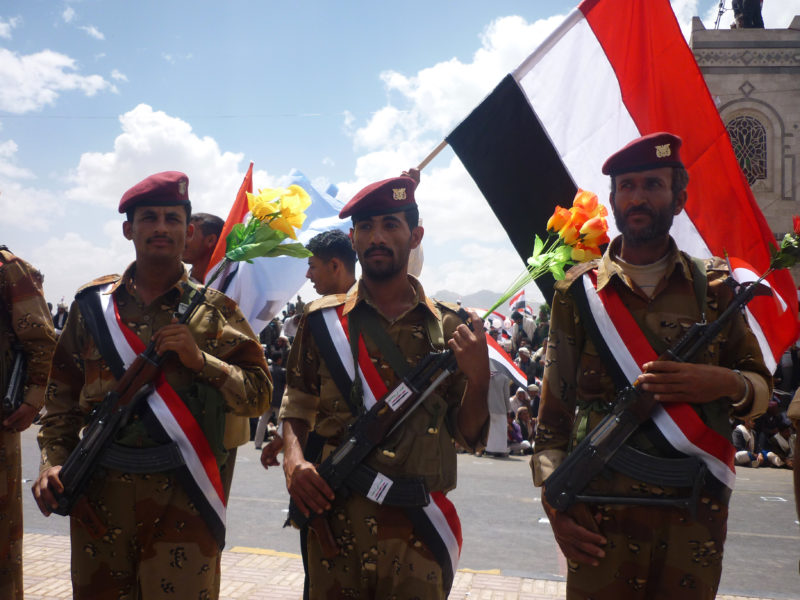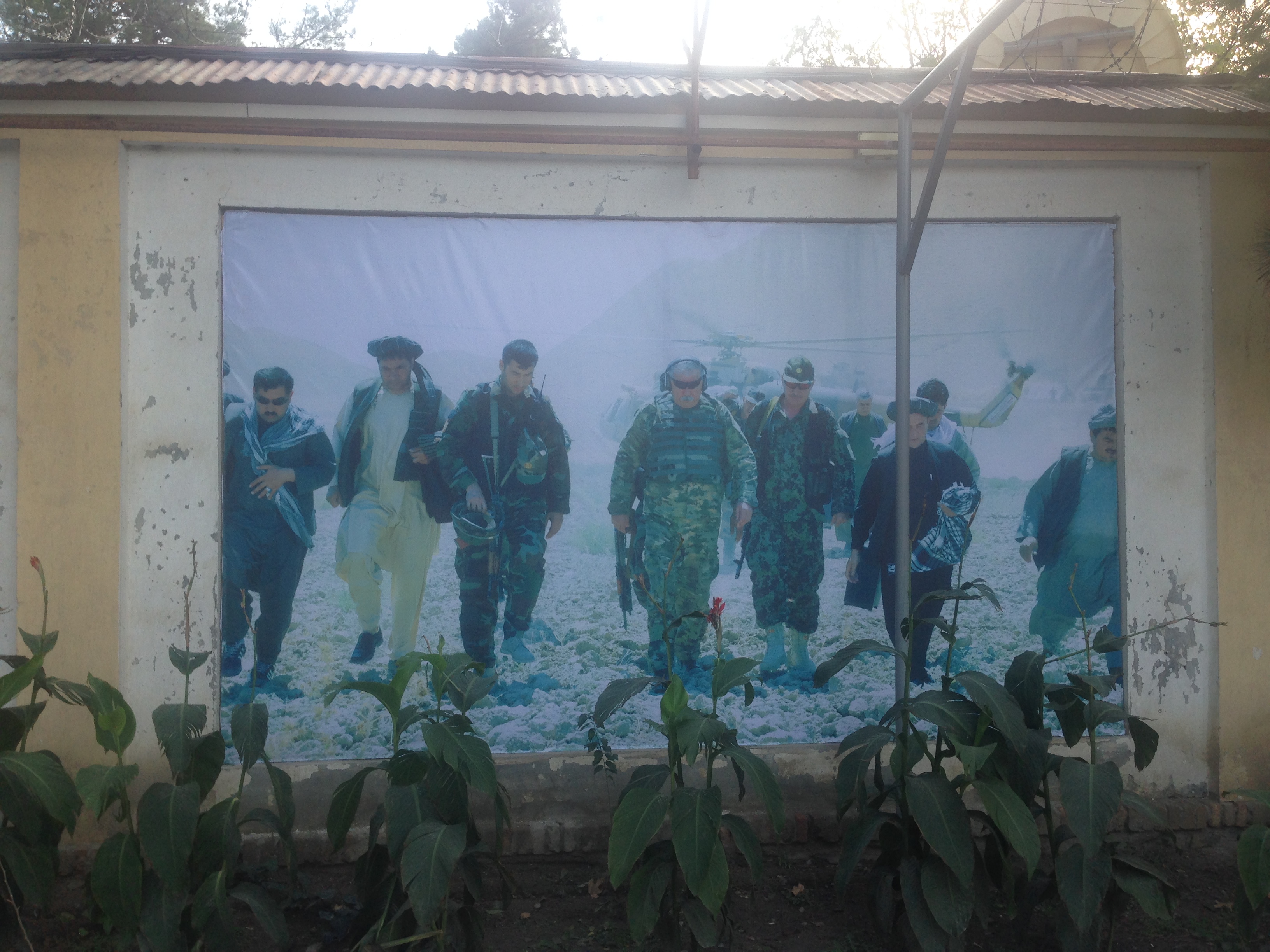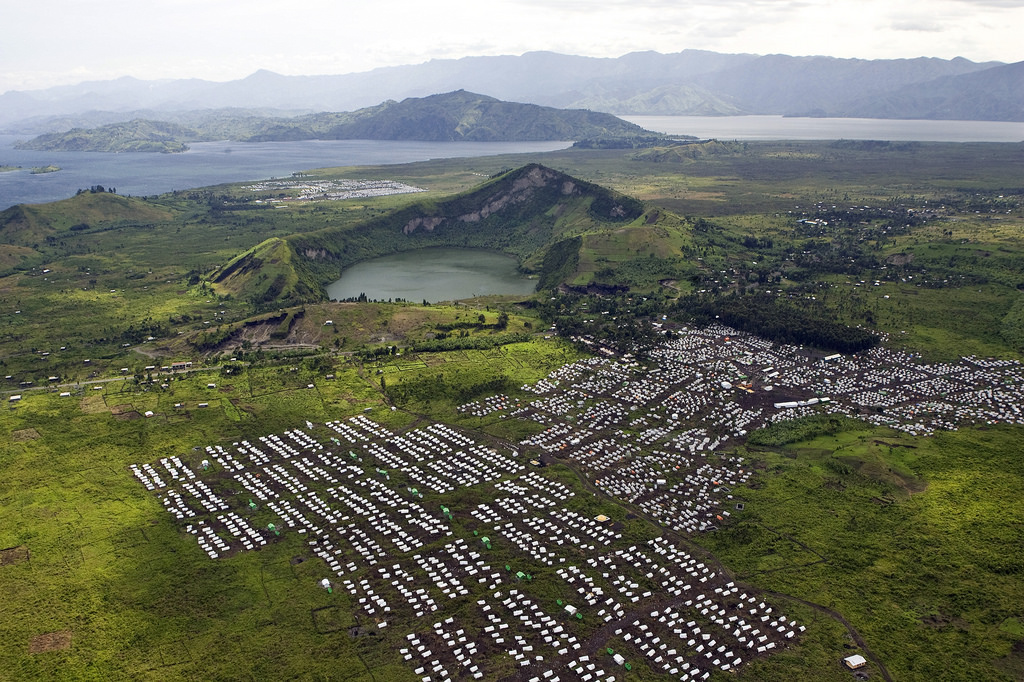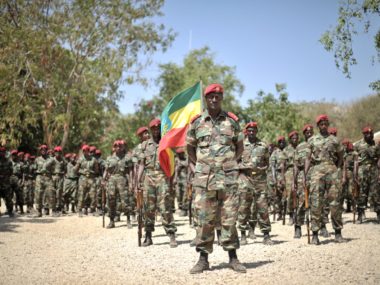By guest contributor Tyler B. Parker, and permanent contributor Peter Krause
Five years ago today, Yemen became a new front in the “Middle East Cold War” when a Saudi-led coalition intervened to restore President Abdu Rabbu Mansour Hadi to power. Hadi, who took over the presidency after longtime authoritarian leader Ali Abdullah Saleh was forced out during the Arab Spring, had fled to Saudi Arabia in late March 2015 following a months-long takeover of the Yemeni capital of Sana’a by Ansar Allah, a Shia militia supported by Iran and known widely as the Houthis.
Hadi remains in Saudi Arabia, and a coalition including Saudi and the UAE have failed to defeat the Houthis. The conflict has led to a humanitarian disaster, the persistence of jihadist groups like al-Qaeda in the Arabian Peninsula (AQAP), and over 100,000 casualties.
The international dimension in Yemen mirrors other civil wars—about 60 percent of which experience third-party interventions that often worsen the fighting. In proxy wars, states arm and support actors in another country to achieve their broader geopolitical goals, while only engaging in a small portion of on-the-ground fighting themselves. Proxy wars can backfire if ideological and strategic disconnects arise between patrons and clients, but they remain a tool of statecraft for their relatively low cost and because patrons can deny involvement.
Today, a complex web of “proxy relationships” fuel Yemen’s war—from the UAE’s support of separatists in the south, to Saudi Arabia’s support for Hadi’s faltering ground forces, and Iran’s covert assistance to the Houthis, who made recent gains in central Yemen as UN-brokered negotiations falter. These countries’ loyalties and aims have shifted over time, depending on their evolving security and political interests.
What do these regional powers want in Yemen?
The UAE has largely diverged from the Saudi-led coalition’s anti-Houthi war in northern Yemen and is “in it to win it” to secure southern Yemen. There, its leadership has supported the Southern Transitional Council (STC), a governing entity that seeks an autonomous South Yemen along pre-1990 borders and whose leadership shares the UAE’s worldview of apolitical Islam. This is crucial for Emirati officials, who perceive jihadists such as AQAP and Islamists such as the Muslim Brotherhood as existential threats. To defeat these strategic threats and generate lasting influence, the UAE has equipped and trained a 90,000-strong security force across the southern port city of Aden and other southern governorates.
The UAE’s patronage of the STC has caused immense tension within the coalition, which culminated in the STC’s seizure of Aden from Hadi’s government last August. Following a power-sharing agreement between Hadi and the STC brokered by Saudi Arabia in November 2019, the STC has achieved what Tyrone Groh terms “the political legitimacy and capacity” crucial to an “in it to win it” intervention strategy. Despite retrenching its own 3,500 soldiers earlier this year, the UAE’s influence remains strong via the STC and its security network.
Saudi Arabia launched the 2015 intervention with the assumption that restoring the pre-war status quo of a Hadi presidency would only take a week. Instead, it has become stuck in a holding pattern, backing Hadi in an unwinnable war. Militarily, its 20,000 air raids have failed to defeat the Houthis and exacerbated a crippling humanitarian situation. Moreover, these strikes have done little to advance the broader Saudi strategic goal of a pliant Yemen from which material threats cannot diffuse. Politically, the Saudis “continue to back what appears to be the weaker side,” as Barbara Walter and Kenneth Pollack observed in January 2015. President Hadi lacks the monopolization of force and control in Yemen and rests his future on international recognition. Although the Saudis have initiated direct talks with the Houthis that accelerated last November, they remain strategically committed to President Hadi and his unpopular and ineffective government.
Iran is feeding the chaos in Yemen in order to prolong the conflict to the detriment of its adversaries. Unlike the UAE’s apprehension with political Islam and the Saudis’ concern over Houthi hegemony, Iranian leaders face few vital threats in Yemen. The Houthis, while not part of Iran’s “Axis of Resistance,” nevertheless offer a prime opportunity to bog down and bleed the Saudis. Militarily, Iran began smuggling small arms into Yemen in 2014, ballistic missiles by 2017, and aerial and water-borne drones by 2018, as the United Nations reports. From a political standpoint, Iran has been the only state to host an official Houthi envoy. Though the Houthis are not under the command-and-control of Iran, their ability to hold northern Yemen and carry out drone and missile attacks on Saudi Arabia offers Tehran the opportunity to sustain a chaotic Yemen to Saudi’s material and reputational detriment.
Ultimately, the UAE has exhibited an effective counterterrorism and patronage strategy that has entrenched its influence in the STC stronghold of Aden. Saudi Arabia, for its part, has revealed the limits that patrons often face in achieving their strategic goals via local proxies. Despite his legitimacy in the halls of the UN, President Hadi marshals little sovereignty in Yemen itself. Finally, Iran demonstrates how covertly feeding the chaos by arming the Houthis has prolonged the conflict to economically and politically drain Saudi Arabia and other interveners with more skin in the game.
Five years of war have accentuated the futility of pure military resolutions to the fighting in Yemen. However, its proxy wars are likely to persist, much for the same reason they have persisted in Syria and Libya; namely, because the potential benefits to intervening states still outweigh the costs that they pay to gain control, maintain the status quo, or simply feed the chaos.
Tyler B. Parker is a PhD student in International Politics at Boston College researching diplomacy and security in the Gulf states and Yemen. Peter Krause, a permanent contributor to Political Violence At A Glance, is an associate professor in the Department of Political Science at Boston College and a research affiliate in the MIT Security Studies Program.






